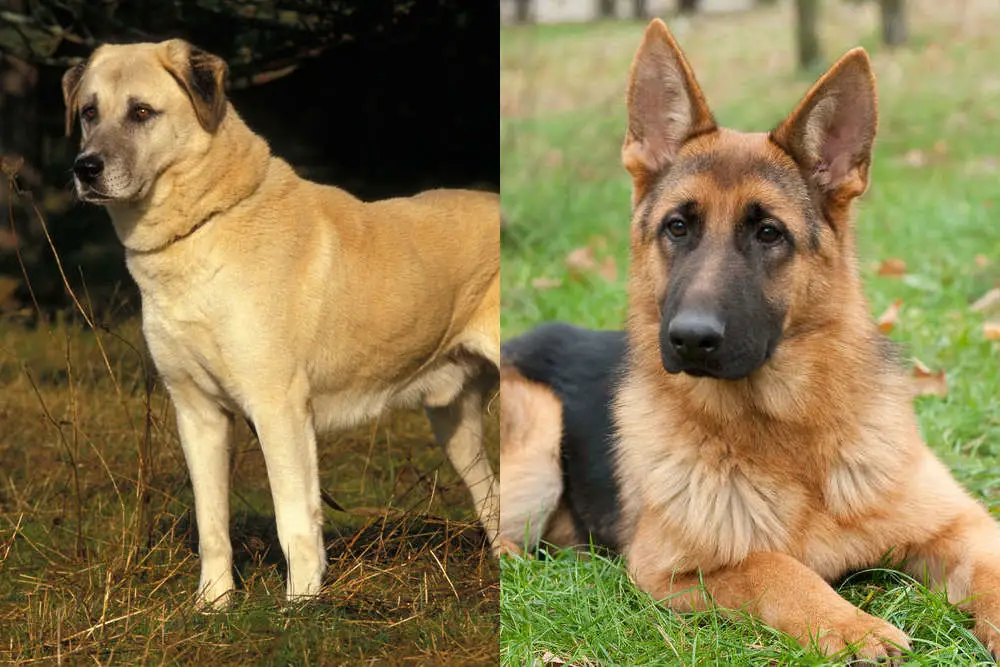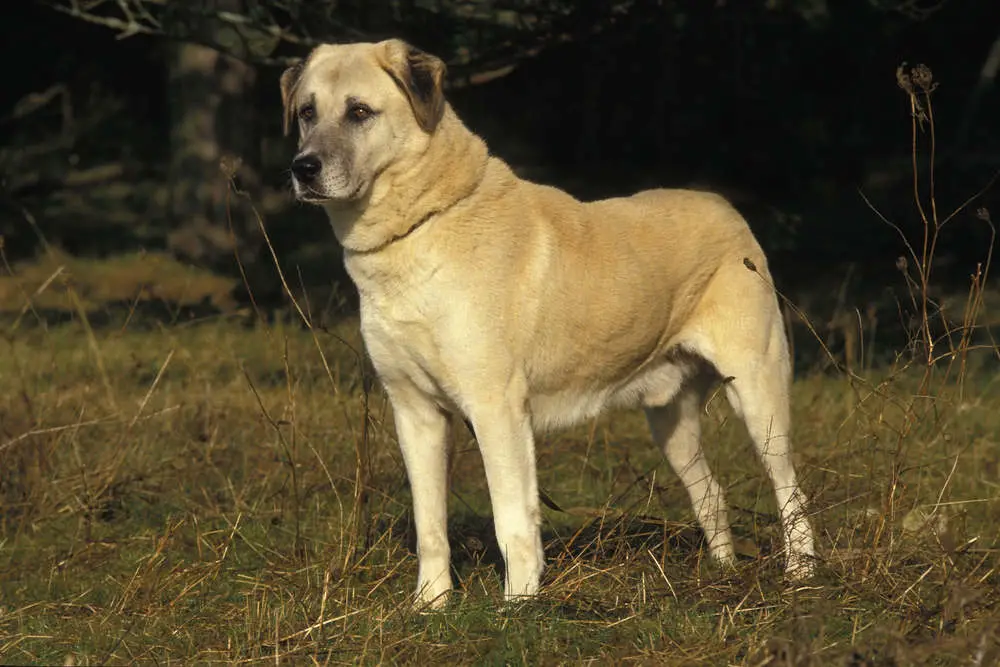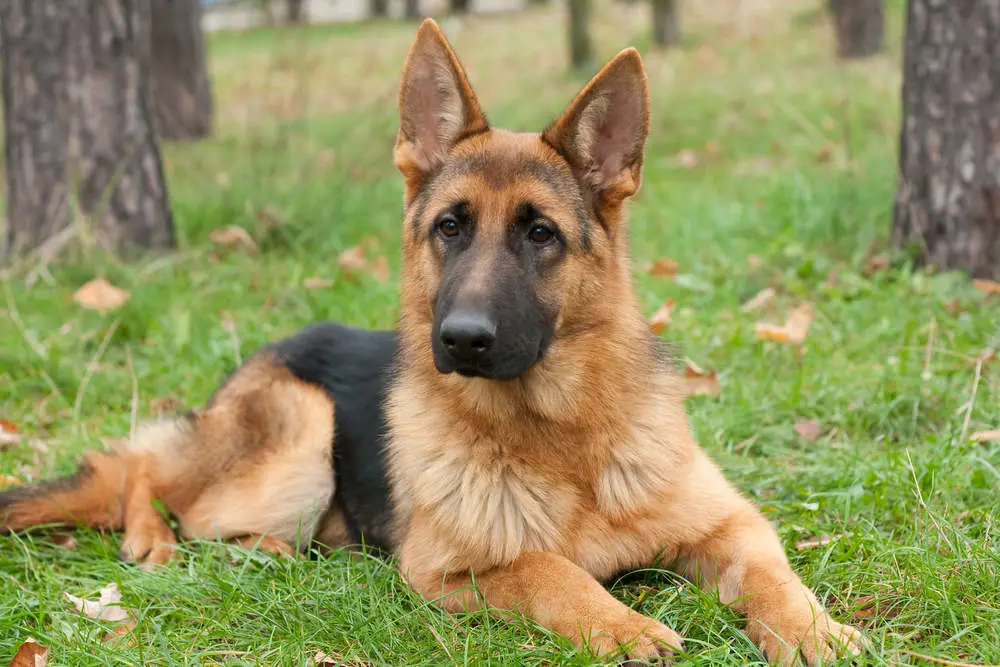
Anatolian Shepherds and German Shepherds have been around for a long time. They have transitioned from working and herding animals to domesticated household pets.
These active dogs share certain commonalities and differ on other grounds. In this article, we will explore how the two breeds compare with each other.
Brief History of the Anatolian Shepherd
You can trace the origins of the Anatolian Shepherd bred as far back as six centuries in Turkey’s Anatolia region.
There are multiple accounts of how they came into existence. Some accounts state that they descended from a shepherd’s dog breed, while others trace the modern-day breed to Mesopotamian hunting dogs.
In either case, one thing is clear—this was a working breed, bred particularly with the intent to guard livestock on ranches and farms.
Anatolian Shepherds’ initial entry into the United States was very covert during World War II. They were part of a project that ended and were shipped off to the Virgin Islands.
They made their re-entry into the country in the 1970s and gained recognition as a breed in 1996.
Brief History of the German Shepherd
As the name points out, German Shepherds have their origin story beginning in Germany. They came into existence at a time when breeders were attempting to standardize dog breeds in order to bring out the best traits for sheep herding.
In the year 1899, Max von Stephanitz saw the potential of a working dog in one of the dogs participating in a dog show and took him home. This dog is the first ancestor of the modern German Shepherd breed.
Interest in the breed began to brew worldwide during the early 1900s, and the United States got their hands on the first German Shepherd in 1907. A year later, the American Kennel Club stamped the seal of recognition on the breed.
Also Read: 5 Different Types of German Shepherds
Physical Characteristics

German Shepherds grow up to 26 inches in height once they mature. These medium-to-large dogs can weigh anywhere between 75 to 95 pounds.
Anatolian Shepherds can reach heights up to 29 inches. They are larger and heavier than German Shepherds. They can weigh up to 150 pounds.
Both breeds have a double coat since they are outdoor dogs bred for work. However, there are a few variations in the type and color.
Anatolian Shepherds have two coat types—short and rough. These coats come in a variety of coat colors. They have various masks and markings and vary in color from blue fawn to gray fawn.
On the other hand, German Shepherds have a denser, coarse coat that is medium in length. According to breed standards, most coat colors, such as black and silver, gray, black, sable, black and red, are acceptable. However, colors like white are not favored.
Neither of these dogs is hypoallergenic.
Behavior
Anatolian Shepherds are very territorial and protective in nature. They are quite intent on doing their job and take pride in accomplishing tasks. This lines up with their status as a working breed.
They tend to have nocturnal habits and are very alert even in their sleep. While they do not display a lot of affection, they are loyal and loving to their family. However, this sentiment is not extended to strangers.
They do not prefer the apartment life, preferring the outdoors over cramped spaces. Since they are territorial, you will have to fence them in to prevent them from extending their territory and getting into fights.
They are also extremely independent. This makes them very strong-headed, and they may not always be most receptive to obeying commands.
German Shepherds are the complete opposite of Anatolian Shepherds when it comes to showing affection. They are extremely lovey-dovey and enjoy physical gestures. They are much better with kids than the latter breed.
Despite their affectionate nature, they are also extremely protective. Their guarding instincts make them wary of strangers. These instincts can sometimes go over the top due to poor training and socialization.
German Shepherds are also highly intelligent and quite adaptable. They are easier to train than Anatolian Shepherds. They are also more active and require more stimulation to avoid getting into mischief.
Also Read: Are German Shepherds Good With Cats?
Diet and Nutrition
Despite being a large breed, Anatolian Shepherds are not predisposed to overeating. In fact, they eat less than expected for their size.
They are particular about their food and have certain dietary requirements. They do not like high-protein commercial food.
They prefer a vegetarian diet in their native environment. They also thrive on a quality rice-lamb meal or a chicken-based diet in addition to cottage cheese and yogurt.
German Shepherds are not as fussy with their meals. They thrive off good-quality protein-rich diets as opposed to Anatolian Shepherds. They require an 18 to 22% protein serving as part of their daily diet.
In addition to meat, they need a well-balanced diet with the right amount of fruits, grain, and vegetables for optimum health.
Health
Both dogs are an overall healthy breed. However, there are some discerning health issues that can affect each breed.
Hip dysplasia and bloat are not common health issues among Anatolians. However, the pet parent must be aware of the symptoms that present with bloat.
They are prone to other hereditary issues like entropion and anesthesia sensitivity.
While German Shepherds are not likely to inherit health problems, certain conditions can still affect them.
They can suffer from bloat, hip dysplasia, elbow hygroma, elbow dysplasia, degenerative myelopathy, and gastric dilation-volvulus. These conditions require proper screening to detect them.
With regular checkups and proper care, Anatolian Shepherds can live a long, healthy life for up to 13 years, whereas German Shepherds have a life expectancy of up to 10 years.
Grooming

Both Anatolian and German Shepherds are fairly low maintenance grooming wise.
Both of them need frequent brushing to get rid of loose hair. They shed profusely during shedding season and need to be brushed more often. German Shepherds shed more than Anatolians.
They do not require frequent baths. A good scrub down with water once a month is enough. Additionally, their nails need to be trimmed every month and dental hygiene should not be neglected.
Exercise
Of the two breeds, Anatolian Shepherds have a moderate energy level. They require some form of exercise daily for at least an hour. They are intelligent animals and need both physical and mental stimulation.
They thrive in open spaces and are not exactly apartment friendly. They need big spaces to stretch their legs, ideally a well-fenced backyard.
German Shepherds have an extremely high energy level. They need a lot more exercise than Anatolians to wear down this energy. A simple walk will not suffice. They make for good running companions and can even outpace you.
If sufficient exercise is not provided, German Shepherds can develop behavioral problems from pent-up energy and frustration. Like Anatolians, they thrive in open spaces rather than in small spaces like an apartment.
While Anatolians can spend time alone, German Shepherds are likely to get bored and destructive if left alone for longer durations.
Also Read: Do German Shepherds Like to Play Fetch?
Training
Since their natural instincts make them quite protective and extremely wary of strangers, it is imperative that Anatolian Shepherds are trained and taught to socialize when they are young.
A poorly trained dog will get triggered and turn aggressive towards people and other animals.
While their natural instinct for independence can make them stubborn and strong-willed, they can be trained to tone it down. Consistent training along with positive reinforcement is a great way to achieve successful obedience training.
It is important to note that since they are very protective, they should not receive guard dog training as it may increase their level of aggression.
Compared to Anatolians, German Shepherds are quite gentle. They are highly intelligent and socialize better.
German Shepherds are easier to train than Anatolian Shepherds. With proper training, they are great around children and make for good protectors.
However, they can become aggressive or anxious if improperly trained.
Which Is Right For You: Anatolian Shepherd or German Shepherd?
Anatolian Shepherds and German Shepherds make for interesting pets. They share certain characteristics and differ vastly from others.
Physically, Anatolians are larger than German Shepherds. They also have more coat colors and types. However, neither breed is suitable for someone who is allergic to fur.
They differ in temperament and behavior too. Anatolians are more aloof towards people than German Shepherds. The former is extremely goofy around loved ones, while the latter breed shows minimal affection.
Despite the differences in showing affection, both are equally protective and loyal to their loved ones.
There are some differences in their dietary needs, with Anatolian Shepherds having a more specific kind of requirement.
Both breeds are generally healthy. Their grooming requirements are also minimal. However, they do shed actively, especially during shedding season.
When it comes down to training and exercise, Anatolians require less exercise but may need more training because of their independent streak.
On the other hand, German Shepherds are balls of high-strung energy, requiring more exercise to keep them happy and calm.
Also Read: King Shepherd vs German Shepherd
Final Thoughts
Now that you have reached the end of the Anatolian Shepherd vs German Shepherd debate, what do you think? Which breed do you prefer?
Both breeds have their unique characteristics and common grounds. They are excellent pets if trained well and loyal to the bone. Which breed do you think would make you a great companion?

